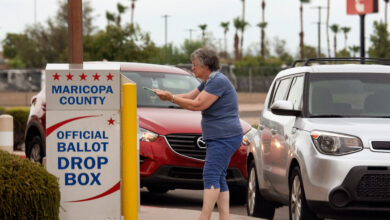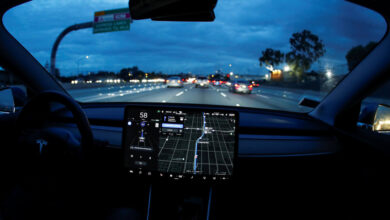Developers Embrace Passion for Pickleball

Vandalism, claims of torture and pressure campaigns are just some of the heavy-handed tactics enthusiasts have encountered in their quest to find a decent court to play their favorite sport: pickleball.
A combination of badminton, tennis and Ping-Pong, pickleball was invented in 1965 as an easy-to-play pastime. After years of quiet popularity, it grew in popularity during the coronavirus pandemic, and devotees now cite it as one of the fastest-growing games in the United States. Sponsors and television networks are showing some interest in the sport, as are celebrities like Jamie Foxx, Stephen Colbert and Ellen DeGeneres.
Pickleball has divided some communities over noise complaints and turf wars, but not all experiences resemble plots fit for a Mafia trial. Some cities are embracing the sport. Recently, Redondo Beach, Calif., budgeted $65,000 for new courts and a feasibility study on possibly adding more. Lincoln, Neb., has already spent $200,000 for new courts and is creating a master plan for further expansion.
Without dedicated municipal interest, though, it is becoming harder to find acceptable places to play in many cities, and private developers are jumping on the opportunity.
But investors are split on whether stand-alone pickleball facilities can become successful businesses. The lack of consensus has led to different concepts meant to attract broader audiences, ranging from facilities with craft food and karaoke rooms to courts in former warehouse spaces accentuated in nightclub décor.
“Doing a project in a traditional manner is uninteresting to me,” said Peter Remes, who founded Lucky Shots in Minneapolis. Mr. Remes, who has started several arts projects in the Twin Cities, added that he had modeled his pickleball building after a “1950s country club,” splashed with a pink and green motif that combines “vintage style with a contemporary edge.”
Lucky Shots opened in October in a 40,000-square-foot space that once housed the Foley Manufacturing Company, a maker of kitchen tools. The Minneapolis Cider Company installed four indoor courts. Life Time, which runs a national chain of fitness clubs, opened its first facility dedicated to pickleball in one of its former gyms in Bloomington, just south of Minneapolis.
“I’ve been in the health and fitness business for almost 40 years and never seen such organic growth,” said Jeff Zwiefel, Life Time’s chief operating officer.
Smash Park is planning two pickleball sites in the Twin Cities. To distinguish itself from competitors, Smash Park is banking heavily on additional forms of entertainment to entice customers. Aside from pickleball, its facilities include ax throwing, karaoke and private event spaces for up to 500 people. They also offer weekly events like trivia nights, Sunday brunch bingo and murder-mystery parties.

Peter Remes founded Lucky Shots, a pickleball facility in Minneapolis.
“Pickleball is fantastic but quite low profit per square foot,” said Monty Lockyear, Smash Park’s chief executive.
Because a court can have only two or four players active at a time, a location offering just pickleball would be unlikely to have “enough clientele to keep it afloat, even with multiple courts,” said Ronald Naples, an adjunct associate professor at New York University’s Jonathan M. Tisch Center of Hospitality.
Food and beverages are another way pickleball facilities are trying to drum up regular users.
The Pickle Bar in Summerville, S.C., will be spread across more than 40,000 square feet and have nine outdoor courts with space for yard games like cornhole, but its focus will be on a bar and restaurant offering Southern cuisine, said Alisa Tolliver, a co-founder.
Across the Southwest, Eureka Restaurant Group is opening Electric Pickle locations influenced by the “eatertainment” model popularized by franchises like Topgolf and Chicken N Pickle, where food and drink complement a variety of recreational activities.
Electric Pickle will feature items like handcrafted cocktails and Korean protein bowls in a setting with “a speakeasy, rustic feel, said Paul Frederick, a Eureka co-founder, who added that the dining experience “has to be the main draw.”
“If I have nine courts and the capacity is four per court but the project capacity is 600 people, we have to indulge them in great food, a great scene,” he said. “We call it hitting all the sensories.”
Eatertainment is particularly appealing now because customer wants have changed during the pandemic, with families seeking large gathering spaces for leisure time, said Seunghyun Park, an assistant professor in hospitality management at St. John’s University.
Eatertainment facilities may not be the most appealing locales for dedicated players, though. Pickleball’s demographics skew heavily toward retirees, and players have gained a reputation for being a prickly, territorial bunch.
Much like tennis, the sport can also seem exclusionary — some paddles cost more than $200. New York City is trying to accommodate demand for more courts but will not renovate over heavily used recreational space like basketball or handball courts, said Margaret Nelson, deputy commissioner for urban park service and public programs at the city’s Department of Parks and Recreation.
“We always try to balance,” she said. “People want to do a lot, and we have a finite amount of space.”
Some locations, like Rally in Charlotte, N.C., are hoping to challenge the belief that pickleball alone cannot anchor a business. Although Rally will include a food and beverage component, additional entertainment options are not on the menu.
“That term eatertainment makes me cringe,” said Barrett Worthington, a Rally co-founder. “So many breweries and concepts throw together so many activities, but we want to have a bit more of a focused approach.”
With or without food and entertainment extras, finding affordable space is a universal concern among start-up pickleball facilities.
The first Electric Pickle locations are being built from the ground up, but Mr. Frederick said he was exploring repurposed buildings for future locales because of rising supply chain costs and lengthy land entitlement processes.
Repurposed spaces that formerly held big-box or department stores are popular choices. Volli, a franchise based in Washington, is planning its first Texas location inside a 62,000-square-foot former Hobby Lobby. (Volli’s first two locations were built inside 20,000-square-foot-plus furniture warehouses.)
Allan Jones, the founder and chief executive of Volli, previously built family adventure parks in abandoned grocery stores. Constructing an entertainment site in a repurposed space probably moves twice as fast as building from the ground up because necessities like parking lots and water and sewage systems are already set up, he said.
Repurposing a big-box store can present challenges, too. For example, low ceilings are not conducive to lob shots. Too many pillars can infringe on court space, which ideally measures 30 feet by 60 feet.
Jorge Barragan, a co-founder of the Picklr, opened a location in Logan, Utah, that once housed a Bed Bath & Beyond and encountered other hurdles.
He said there were high costs in removing drop ceilings and almost 25,000 square feet of flooring that had asbestos. Some landlords would not approve a lease at other prospective sites because of unfamiliarity with pickleball.
With pickleball still largely considered a niche sport, some are selling the idea of a pickleball facility by not thinking of it as one at all.
Inside Lucky Shots in Minneapolis, installations of large emoticons or phrases like “Sup?” emit a Pop Art feel. Since opening last fall, the club has signed up 9,000 members, many entranced by the ambience, Mr. Remes said.
“What I do has nothing to do with pickleball,” he said. “It’s immersion in arts and culture that creates with a space in a physiological manner, so when they walk in they feel something.”





